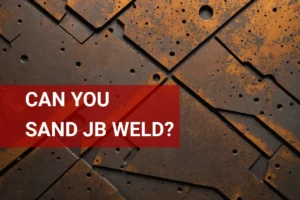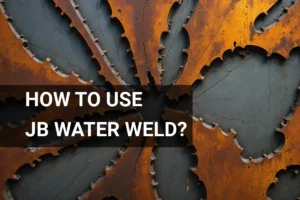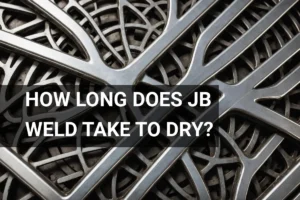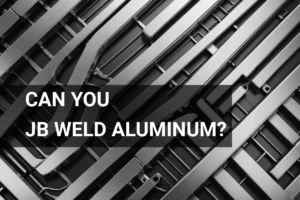How to Use J-B Water Weld on Metal? A Step-by-step Guide to Repair and Applications
Published on: February 4, 2025 | Last modified: March 4, 2025
By: Mark Carter
J-B Water Weld is a two-part epoxy that can fix metal and other surfaces. It sets quickly and creates a strong bond, making it great for repairs.
People often ask how to use j-b water weld on metal. It’s super important to follow the steps right to ensure a solid repair. Trust me, I’ve had great success using it when fixing my tools, so taking care to apply it correctly really pays off.
In this guide, you’ll learn about J-B Water Weld, its types, what you need before starting, and the steps to follow. We’ll also cover precautions, types of applications, factors that affect its use, common issues, and aftercare tips. You’ll get a full understanding of how to use jb weld for metal effectively.
Contents
- How to Use J-B Water Weld on Metal?
- What is J-B Water Weld?
- Types Of J-B Water Weld
- Prerequisites
- Steps to Use J-B Water Weld on Metal
- Precautions
- Types Of Applications for J-B Water Weld
- Factors Affecting Usage Of J-B Water Weld
- Common Issues and Troubleshooting
- Aftercare, Inspection, and Advanced Tips for J-B Water Weld
- Advanced Techniques for Using J-B Water Weld on Metal
- Key Benefits
- Typical Uses
- Alternatives That Might Work Better
- Frequently Asked Questions (FAQs)
- Conclusion
- References
How to Use J-B Water Weld on Metal?
J-B Water Weld is a two-part epoxy that bonds to metal. To use, clean the surface, mix equal parts, and apply with a putty knife. It sets in 4-6 hours and is great for repairs. It’s easy to use!
What is J-B Water Weld?
J-B Water Weld is a two-part epoxy for repairing or bonding materials. It sets in about 4-6 hours and can be submerged in water after just 20-30 minutes. With a tensile strength of around 930 psi (Pounds Per Square Inch), it’s tough enough for demanding applications. This product withstands temperatures up to 121°C (250°F), making it suitable for various environments.
To use J-B Water Weld on metal, preparation is key. Ensure the surface is clean and dry. From my experience, mixing equal parts of the putty and applying it quickly yields the best results.
I used it to repair a leaky pipe at work. After applying J-B Water Weld, I was amazed at how quickly it hardened and sealed the leak. When using J-B Water Weld on metal, especially in plumbing, the bond is critical. If you’ve got a fix, you’ll appreciate how effective this product is for metal applications, like pipes or even metal roofs!
Types Of J-B Water Weld
What types of J-B Water Weld can you use on metal?
-
J-B Water Weld Epoxy
This versatile, industrial-strength epoxy requires mixing equal parts before use. Clean the metal surface, knead the epoxy until uniform, spread it evenly, and let it cure for 4-6 hours at room temperature.
-
J-B Kwik Weld
This type sets quickly, making it ideal for fast repairs. Mix the components and apply immediately. Clean the surface, squeeze out the mixture evenly for good contact, and allow it to harden in about 4-6 minutes.
-
J-B Clear Weld
This epoxy forms a clear bond for metal. Mix the parts, clean the metal surface, coat it with the mixture, and wait at least 5-6 hours for full strength.
-
J-B Marine Weld
Designed specifically for underwater use (Great for Boat Repairs!), combine the parts and apply where needed. Clean the area, spread it carefully, and allow 4-6 hours to cure – even underwater!
-
J-B Highheat Weld
Ideal for high-temperature environments, this type withstands extreme heat. Mix the components well, apply to clean surfaces, and allow it to cure for around 1-2 hours.
So far we covered the different varieties of J-B Water Weld. Let’s look at the necessary prerequisites next.
Prerequisites
What do you need to start?
- J-B Water Weld: Use the original J-B Water Weld, like J-B Weld 8265s. It’s essential for bonding, as it’s designed to repair metal.
- Sandpaper: Have medium grit sandpaper, around 120 grit, such as 3M’s 120 Sandpaper. It prepares the surface for adhesion by removing rust and grime.
- Cleaning Solvent: Use a cleaning solvent like acetone. It’s crucial for cleaning the surface to ensure good adhesion.
- Mixing Tools: Grab a small mixing stick, like a popsicle stick. You’ll need this to combine the two-part epoxy for effective application.
We covered the necessary requirements for using J-B Water Weld. We will now cover the steps for using it on metal.
Steps to Use J-B Water Weld on Metal
We’ll cover the steps to apply J-B Water Weld on metal effectively. Follow each step closely for great results.
-
Clean the Surface
The first step is to clean the metal surface. Scrub off any rust, grease, or dirt. Use a wire brush or #80 grit sandpaper to ensure proper adhesion. A clean surface creates the strongest bond—if it’s dirty, you might get weak spots!
Wipe the area with a lint-free cloth afterward. For extra assurance, use a degreaser. It’s all about creating a solid foundation for the J-B Water Weld.
-
Mix the Epoxy
Next, knead the J-B Water Weld until it’s a uniform color. You’ll want about a dime-sized piece per repair. This epoxy is a two-part system, so even mixing is crucial. Uneven mixtures lead to poor bonding—I learned that the hard way!
Here’s what to do: Take 50 g (1.76 Oz) from each tube and mix thoroughly. Aim for a consistent gray color—you’ll know it’s ready! If it still has streaks, keep mixing.
-
Apply the Mixture
Apply the mixed J-B Water Weld directly to the prepared area. Use a putty knife or your gloved fingers to spread it evenly. Press firmly to fill any gaps, enhancing strength. For best results, aim for a layer about 3-5 mm thick. Seam welding techniques ensure that materials are joined efficiently and with optimal durability. Learn more about what is seam welding.
If you see uneven spots, don’t hesitate to apply more. It’s easier to build it up than fix a thin layer later. Being generous with the application pays off in the long run!
-
Allow to Cure
Let the J-B Water Weld cure. It sets in about 4-6 hours at room temperature (Around 20°C or 68°F). For full bond strength, let it cure for 12-24 hours.
If you’re repairing a metal roof or another project under constant pressure, keep those conditions in mind, as they may affect curing times. Check occasionally to see if it’s hardening properly—patience leads to lasting results!
We covered the process for using J-B Water Weld on metal. We will now cover safety measures and precautions.
Precautions
Let’s quickly cover key safety measures for using J-B Water Weld.
- Ventilation: Always work in a well-ventilated space, like outdoors or in an open garage. It reduces exposure to fumes.
- Wear Gloves: Use nitrile gloves to protect your skin from chemicals. I recommend Gorilla Tough & Clear Glue, but it’s just for bonding!
- Safety Goggles: Wear goggles to shield your eyes from splashes. Eye protection prevents irritation and injury.
- Keep Away From Heat: Always store and work with J-B Water Weld away from heat sources. High temperatures can drastically affect performance.
Don’t take safety lightly; it’s essential for your well-being and peace of mind.
You should now have a good understanding of safety measures, best practices, and tips. In the next part, we’ll discuss application types for J-B Water Weld.
Types Of Applications for J-B Water Weld
Let’s explore the applications of J-B Water Weld, including metal repairs, pipe sealing, automotive use, marine patching, and household fixes.
-
Metal Repairs
J-B Water Weld is ideal for fixing broken metal parts. It’s excellent for repairing aluminum, steel, and cast iron. It sets in 4-6 hours and reaches 70% of its strength in a day. The epoxy withstands temperatures up to 150°C (302°F) and is highly durable.
-
Pipe Sealing
Use J-B Water Weld to quickly seal leaking pipes. It’s waterproof, making it effective on both hot and cold water pipes. After application, it sets rapidly and provides a long-lasting patch, even under pressure.
-
Automotive Use
This product excels in automotive repairs. Whether you’re mending a cracked engine block or a leaky radiator, J-B Water Weld is up to the task. I’ve used it on my own vehicle, saving me many trips to the mechanic.
-
Marine Patching
J-B Water Weld also repairs boats and marine equipment. It’s resistant to saltwater and effectively patches leaks in fuel tanks. Always clean the area before application for optimal results.
-
Household Fixes
This versatile epoxy is perfect for various household repairs. From fixing a broken chair leg to repairing garden tools, it’s your go-to solution for quick fixes. It’s easy to apply and durable for everyday use.
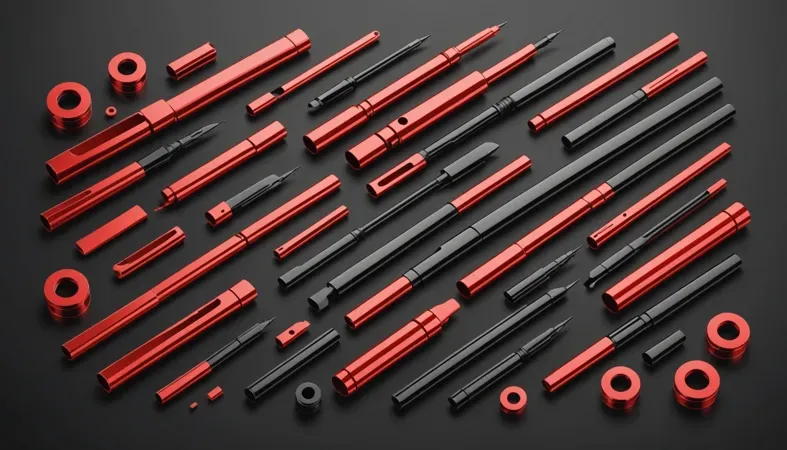
Factors Affecting Usage Of J-B Water Weld
What factors influence your success with J-B Water Weld on metal?
-
Surface Preparation
Clean surfaces enhance adhesion. Remove rust, oil, and dirt for optimal bonding.
-
Temperature Conditions
J-B Water Weld works best between 50°F and 100°F (10°C and 38°C). Temperatures that are too cold or too hot can affect curing.
-
Humidity Levels
High humidity can interfere with the curing process. Use a dehumidifier if the air is saturated.
-
Curing Time
Allow at least 4 to 6 hours for bonding at room temperature. Full strength develops after 24 hours for the best results.
-
Mixing Ratio
Follow the 1:1 mixing ratio closely. Incorrect proportions can weaken bonds, undermining your repairs.
Common Issues and Troubleshooting
Let’s look at specific problems with J-B Water Weld.
-
Improper Surface Adhesion
J-B Water Weld may fail if surfaces aren’t clean. Ensure they’re free from oil or rust. Clean with acetone and roughen the surface.
-
Poor Curing Results
J-B Water Weld cures in 4 to 6 hours. Mix equal parts thoroughly and apply immediately.
-
Mixing Errors
J-B Water Weld won’t bond if not mixed properly. Use a scale for equal parts; it’s crucial for success.
-
Temperature Impact
J-B Water Weld works best at 60°F to 100°F (15°C to 38°C). If it’s too cold, heat the area or use a heat lamp.
-
Excessive Wear
J-B Water Weld can wear down under heavy use. If you notice cracks or peeling, consider a topcoat or replacement for heavy-duty applications.
Aftercare, Inspection, and Advanced Tips for J-B Water Weld
Here’s some important advice to ensure your repair stays solid.
Aftercare Tips
After you’ve mixed and applied the J-B Water Weld, let it cure for at least 15 hours. Avoid water exposure during this time, and don’t stress the bond until it’s fully set. Keep the temperature above 60°F (15.5°C) because low temperatures can significantly extend curing time.
Inspection
Inspect the bond area 24 hours after application. Ensure there’s no discoloration or powdery residue, which might indicate it didn’t cure properly. For extra assurance, I use adhesive products like Gorilla Glue nearby as a handy comparison.
Expert Tips
I recommend mixing J-B Water Weld in smaller batches for detailed jobs. This prevents premature hardening and allows for better adjustment. Apply pressure between the bonding surfaces—aim for at least 15 psi (Pounds Per Square Inch) to improve adhesion. And don’t forget your safety gear, especially gloves and goggles; they’re essential!
Advanced Techniques for Using J-B Water Weld on Metal
If you’re looking to maximize your results with J-B Water Weld, consider these advanced techniques.
Thick vs. Thin Applications
- Thick Applications: Use 5-10 mm layers for heavily stressed areas. For example, a metal pipe joint may require a thicker coat to prevent leaks.
- Thin Applications: Apply less than 3 mm for minor repairs. It’s useful for small cracks or joints where aesthetics matter.
Temperature Considerations
Ideal use conditions range between 20°C to 30°C (68°F to 86°F). For better performance, consider these situations:
- In colder weather, pre-warm the metal with a heat gun to improve adhesion.
- In hotter climates, work quickly to avoid premature hardening—especially above 30°C (86°F).
Repairing Different Metal Types
Different metals have unique properties. Here’s how J-B Water Weld performs across various types:
| Metal Type | Adhesion Strength (psi) | Cure Time (hours) | Special Tips |
|---|---|---|---|
| Steel | 1,000 | 4-6 | Prep with sandpaper for a rougher surface. |
| Aluminum | 850 | 4-6 | Use an aluminum-specific primer if possible. |
| Cast Iron | 900 | 6-12 | Heat the area before application for a stronger bond. |
| Brass | 800 | 4-6 | Clean thoroughly to remove tarnish and oils. |
Using J-B Water Weld in Moister Environments
If you’re in a humid environment, remember this:
- Use a moisture meter to assess the surface before application.
- Increase cure time to 24 hours to ensure a strong bond.
By considering these advanced techniques, you can ensure that your repairs with J-B Water Weld are effective and long-lasting.
Key Benefits
The unique benefit of J-B Water Weld is its impressive ability to bond in wet environments. In my experience, I used it to fix leaks in pipes where traditional adhesives didn’t stick.
This product is versatile, working on various metals like steel and aluminum. It sets quickly, cures underwater, and resists chemicals and temperatures up to 65°C (150°F).
Typical Uses
People use J-B Water Weld for urgent metal repairs, but it has many applications, such as:
- Tank Repairs: Seal leaks in metal tanks to ensure safe containment. It’s popular in plumbing and fuel tanks for its high strength.
- Pipe Patching: Use it for temporary fixes on leaking pipes. It withstands water pressure and is favored by plumbers in emergencies.
- Automotive Fixes: Apply it to repair cracks in metal engine parts. Mechanics prefer it for its heat resistance and quick curing time.
- Marine Applications: Use it on boats to mend small leaks in metal hulls. It’s especially favored by boaters for underwater repairs.
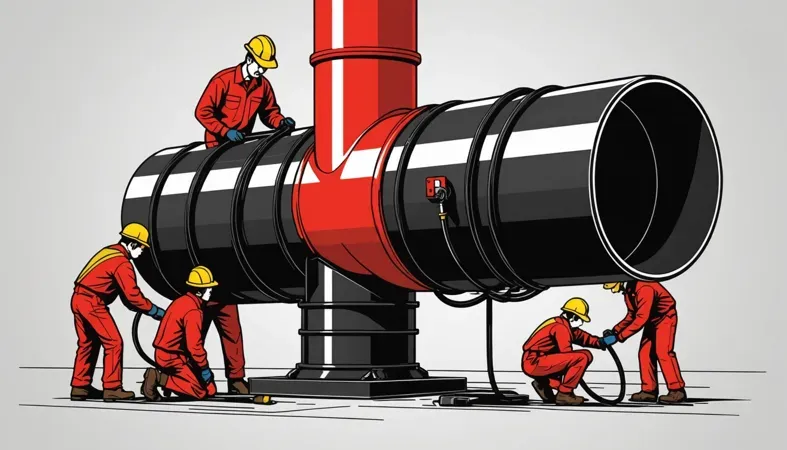
Alternatives That Might Work Better
If you want a sturdy bond, consider using epoxy solutions like Loctite Epoxy Weld or Devcon Plastic Steel. In my experience, these options excel in demanding conditions, like high temperatures or underwater repairs. They often cure faster, which is a plus when you’re in a hurry.
You might also explore metal fusion techniques such as brazing or soldering, especially for projects that involve electrical components. These methods can provide stronger and more conductive joints. So, think about what’s best for your specific needs before jumping in!
Frequently Asked Questions (FAQs)
Now let us look at some unique questions I typically get asked.
What’s the Difference Between JB Weld and JB Waterweld?
JB Weld and JB WaterWeld serve different purposes. JB Weld is a high-strength adhesive for metal, while JB WaterWeld is designed for underwater repairs. WaterWeld can handle temperatures up to 121°C (250°F) and cures in water, making it ideal for plumbing issues.
For those working with metal, understanding how to weld 45-degree angles can significantly enhance the quality and precision of their projects.
How Long Will JB Weld Water Weld Last?
JB Weld WaterWeld provides long-lasting durability for repairs. When fully cured, it stands up to 121°C (250°F) and creates a waterproof seal. Many users report effective repairs lasting years, depending on stress and environmental factors.
Can You Use JB Weld on Metal?
Yes, you can use JB Weld on metal. It bonds effectively with steel, aluminum, and other metals. A proper application can withstand heavy loads, with tensile strength often exceeding 1,000 psi, which makes it reliable for structural repairs. For those looking into effective solutions, exploring welding alternatives like JB Weld can provide valuable insights.
If you’re considering tackling challenging welding positions, learn the techniques for welding upside down for improved craftsmanship.
How to Repair Pot Metal With JB Weld?
To repair pot metal with JB Weld, clean the surface thoroughly. Make sure you mix the JB Weld properly for the best adhesion. Pot metal typically requires a different approach than steel since it can be porous, but the right methods ensure a strong hold.
How to Apply JB Weld to Metal?
To apply JB Weld to metal, ensure the surfaces are clean and dry. Mix equal parts of the epoxy, then apply it smoothly. After it cures, which usually takes 4 to 6 hours, it achieves maximum strength and can withstand most physical challenges.
Conclusion
We covered what J-B Water Weld is, its types, prerequisites, and steps for application. We also discussed precautions, common issues, types of applications, factors affecting its usage, and aftercare tips. Key benefits and alternatives to J-B Water Weld were examined as well.
I trust these insights have been helpful. To use J-B Water Weld on metal, start by cleaning the surface, then mix the epoxy and apply it where needed. Wait for the recommended cure time, usually about 4 to 6 hours at 77°F (25°C), for a solid bond.
For further exploration into welding techniques and tools, feel free to visit our homepage: What is Welding
References
- Occupational Safety and Health Administration (OSHA): Welding, Cutting, and Brazing: https://www.osha.gov/welding-cutting-brazing
Mark is a skilled welding engineer specializing in advanced metal joining technologies and process design. With a formal education in welding engineering and a background rooted in practical experience, Mark bridges the gap between theory and application. He is passionate about making technical concepts accessible, empowering welders to embrace innovation while mastering essential skills. Mark combines his scientific expertise with a commitment to supporting the welding community alongside his uncle, Joe.
45-degree Angles, Art, Automotive Repairs, Bonding, DIY Repair, Epoxy Application, J-B Water Weld, Metal Repair, Plumbing Solutions, Welding, Welding Techniques


